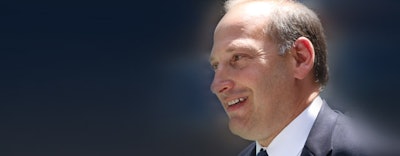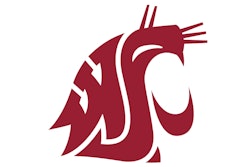
The first half of Danny Zausner's 34-year career in event management took him all over the world — first as a concert promoter, then as head of Ogden Entertainment, where he oversaw the operation of 60 stadiums and arenas. For the past 17 years, his focus has resided exclusively on a 42-acre parcel of land a mere 15 miles from his home. As chief operating officer of the USTA Billie Jean King National Tennis Center in Flushing, N.Y., Zausner has shepherded a $650 million, eight-year renovation that has transformed the world's largest public tennis facility into the envy of the entire sports world, with retractable roofs on two venues (including 24,000-seat Arthur Ashe Stadium) and a festival atmosphere surrounding its signature event — the U.S. Open. In the process, the Open has seen growth in ticket sales from $45 million to $120 million, as well as increases in attendance (40 percent), food and beverage sales (from $8 million to $30 million) and merchandise sales (from $6 million to $18 million). AB senior editor Paul Steinbach asked Zausner to reflect on his homecoming.
What does managing 60 venues entail?
In new venues, I was actively involved in every aspect — from the design of the building to getting the staff hired to selling the sponsorships and getting shows booked and convincing teams to play there and working with cities and/or private ownership groups to want to hire my company as opposed to the competition. And then in other venues where we were in for quite some time it was more about continuing to get the shows, the events in there that would help generate the revenue that would keep the cities interested in having us continue to manage those venues. So there were all different aspects, and obviously we had about 5,000 employees at all those locations, so it was critical to have the best general manager at each location who would report up. For instance, in the United States, I would have three regional executives — one East Coast, one Midwest and one West Coast. I had a person who oversaw all of Europe for us, and I had someone who oversaw Australia and someone who was in charge of South America. So it was my job to really just travel the world and check in with them regularly and help drum up new business in developing markets.
Why did you decide to set roots with this job?
This was the first opportunity to use every skill set I had hoped to develop over the first 17 years of my career and literally be grounded and focused on one event and how to make one event better on an annual basis.
How do you explain the Open's phenomenal financial growth?
Well, a cynic would say that all we did was raise prices, but I can tell you that's not the case. We always knew that the players were going to take care of the action on the court, and I think my job coming into this with an entertainment background was to surround that and make the experience throughout the grounds as special as watching the match on the court.
What is a day at the Open like for fans?
I noticed that the average fan was spending eight to 10 hours here versus a traditional sporting event's two to three. So they're spending multiple meal periods here, and they are prepared to check in at 9 a.m. when the gates open and stay here until 11 o'clock at night, as long as there's tennis on the grounds somewhere. So we completely changed the whole philosophy on our food and beverage experience. Now, while the whole buzz thing is celebrity chefs, I started doing that 10 plus years ago. We always had a great retail program here, but years ago we brought Polo Ralph Lauren on, and they recreated their Madison Avenue store right here at the tennis center. That's open just three weeks a year. I think all of those things and the way our sponsors like Adidas and Wilson activate on the site is so unique for a sporting event. I like to say, if you're not a tennis purist who's just about keeping score on a match, my typical fan can go to work or talk to their friends the next day and say, "I was at the Open last night. I had a phenomenal time." And someone could say to them, "Well, who did you see play?" "I don't even remember who it was, but I had a phenomenal time." We sell 10,000-plus grounds passes on a daily basis. There's probably no greater value in sports.
Will the grounds host events beyond tennis?
Well, it's interesting because when I got here we thought that was going to be one of the priorities, and then what ended up happening is I quickly discovered that there was so much more opportunity to do more with the Open itself that we spent a fair number of years just developing the site. It took me about three years to work through a city approval process and then another five years to start getting all this stuff designed and then hiring contractors and getting it built. So 2019 is going to be about the first chance I have to start utilizing our venues. I'm starting to talk to all of my cohorts from the entertainment business about how to best utilize either for one-off stand-alone events in one of the stadiums or a festival-type event that might utilize all 40 acres. It's also important to note that USTA's main mission is growing the sport of tennis. Therefore, outside of the U.S. Open we are open as a public recreational tennis facility. Even though we're finishing an enormous construction project this year, we'll continue to do projects throughout the site on an annual basis, so we have to juggle the community tennis aspect of it, prep for the U.S. Open and wanting to do other events that will hopefully draw a new audience to the site.
What's the biggest challenge facing venue operators in 2018?
Well, I think it's been a threat that's been out there for years, and it's one that we kind of saw coming and started to witness and that is that our typical fan doesn't have the attention span of what they might have had several years ago. The Millennial audience needs to be able to activate from their seats, be on the move. We believe our social media platform is incredibly strong and we look to improve it every single year. How we're doing wi-fi on the site is important because they're capturing so much data and using their phones so much while they're on the site. We have to be ahead of that curve. We can't be behind it.
Have representatives from others sports contacted you to ask how you do create the Open experience, amid the recent rise of stadium entertainment districts?
I see so many of the different sports leagues and teams come out here during the Open. And I'm the first one to admit that I travel to the Masters and to the Super Bowl. I can go to Lincoln Center one night. We'll see an idea from anywhere along the way that might help us improve the experience for our fans. I think we're all capable of and guilty of some form of theft of great ideas from someplace.
Are retractable roofs the future of tennis?
Well, outside of the Grand Slam events it's difficult for most cities to make that type of investment. Our main draw is 14 days. A lot of the others — the second-scale tournaments — are eight to 10 days at best. It's very interesting. Everyone that's got a roof has one for different reasons. Wimbledon's had an inordinate amount of rain. Australia is primarily about the heat. When they were looking at the design of this stadium several years before I got here — they started the design in '94, and it opened in '97 — they looked at about a hundred years worth of empirical data for the week before and after Labor Day and found it was a relatively dry time of year. So they decided to not put a roof over the stadium. They had designed it for 18,000 seats with a roof, 24,000 seats without. They went with the 24,000 seats, and frankly from '97 to about 2002 — so for the first five or six years of operation — it continued to be relatively dry and they sold a lot of those extra 5,000 to 6,000 tickets, so it seemed like the right move to make. We started doing roof studies in 2003, because we had a couple cancelled sessions before that, and we have terrible land conditions where we're located. The building was built on piles and there's no excess capacity within the pile structure, so we couldn't just plop a roof on the existing stadium. It had to be a real technological structural engineering feat to figure out how to get a retractable roof on top of the stadium. I say retractable because it's an outdoor tournament, and the last thing we wanted is to have one stadium enclosed all the time and the other 17 courts open to the elements. We want it to be consistent for all players during the tournament. So we continued to do studies. We three did studies in total — 2003, 2004, 2007 — and then in 2009 we looked at our fourth study and none of them really met any of the criteria. And by about 2011, right around the same time we started working on the plans for all the other projects, we finally came up with a solution, and that became a piece of the larger puzzle. Ours is not always about rain, but at the same time you want to ensure that when the players go out on the court that they can keep playing. More than 16 percent of the fans come from outside the tri-state area, 40 percent total are from outside the tri-state area or international. So they can be traveling to be here for just a couple of days and then to miss the tennis when they're here — they may still have a great time on the grounds but it's not a great experience. And there's no financial return that justifies the investment of putting the roof over Ashe, but it was the right direction for the tournament to make. And we made sure that with the new Louis Armstrong Stadium, building it from scratch, that we'd have two stadiums with retractable roofs. Ironically, before we announced that we were putting roof over Ashe, the French Open announced that they were going to build a stadium with a roof. Ashe has been open for two years now, and they're just about to start breaking ground in Paris on their roof. They've gone through the same logistical hurdles that we went through, and being in a park, their approval process was a lot more painful than ours was.
Were you able to roof Arthur Ashe and maintain its original capacity?
Yeah, that's a great question, and it almost offers an opportunity to increase the capacity, and I personally didn't think that was justified. We're already the largest tennis stadium in the world. We could possibly sell more tickets, but the concourses couldn't get bigger, and therefore while people can sit in the seats and be comfortable, their access to and from the seats and from the grounds would be less than ideal. So what we did is take three levels of seating — we have our courtside seats, we have our loge seating and then we have our promenade seating — and at the same time we were doing the roof, we ripped out all of our loge seating, and I developed a plan where there were fewer aisles. Tennis used to be much more of a box-oriented structure like the old baseball parks were and not as much of an arena structure. So where we might have had four seats in a row, we went up to 14 seats in a row, and with fewer aisles we were able to pack a thousand seats in our loge and eliminate a thousand seats in the promenade. We were able to bring a thousand people much lower down, obviously at a higher price point. We were generating more revenue, we were getting people closer to the action.
Are there other upgrades to Ashe?
We used to have two video screens up on top of the stadium and we lowered them down and added four video screens — north, east, south and west — so that the fans not only were closer to the action but they actually saw the video aspect of it, which didn't exist in tennis before we introduced it in 2001. And now with instant replay people are always going to the video screens to see what's going on.
Even clapping in unison in anticipation of the replay.
Exactly right. Ironically, when we were first introducing it, the broadcasters were very concerned that instant replay was going to take so long that they'd have time to fill, and within seconds of the first challenge the first year we introduced this five plus years ago, they were complaining to us that it was too fast.
What letter grade would you give the state of U.S. tennis in 2018?
In terms of the growth of the sport in general, we see strong growth on the community tennis side. Over the last couple years, while sales and participation are down for most of traditional sports in the U.S., we've been flat or up. I think the growth of the sport is B-plus, A-minus right now, and it's got a very strong long-term outlook. We're feeling really good about the stuff that's going on out here.
This article originally appeared in the September 2018 issue of Athletic Business with the title "Turning a tennis tournament into an all-day experience." Athletic Business is a free magazine for professionals in the athletic, fitness and recreation industry. Click here to subscribe.





































